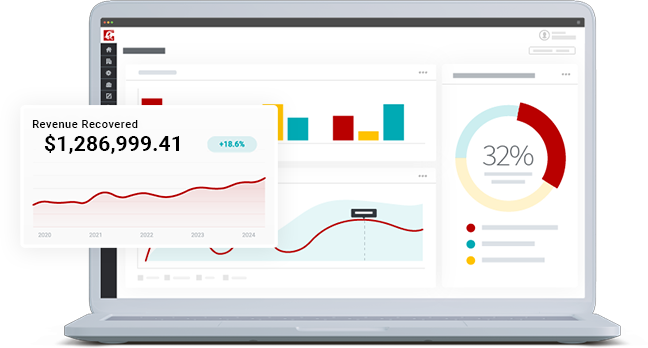What Happens When You Dispute a Transaction? Here's a Step-by-Step Guide Explaining How to Dispute a Charge... & When You Shouldn't Do it.
We’ve all made the occasional online purchase that didn’t quite live up to our expectations.
It’s a remarkably common thing. After all, when we can’t touch, hold, or measure the things we’re shopping for, it’s hard to get a feel for what you’re really buying. More often than not, consumers rely on detailed product descriptions and photographs to make their selections. But, as you may have guessed, that can sometimes spell trouble.
What do you do when the items you purchase differ significantly from the description you were given? What if your goods arrive broken? Or, if they never arrive at all? Even worse, what if you never even authorized the purchase to begin with?
Any of these issues may give you a valid reason to open a transaction dispute. You may not be sure what that is or how it works, though. So, let’s go over it together and see if we can get a better idea of what happens when you dispute a transaction.
Recommended reading
- Credit Card Disputes | Step-by-Step Process Guide for 2025
- How Do Banks Investigate Disputes on Credit Cards?
- The Bank Dispute Process: A Step-by-Step Guide
- What is a Transaction Dispute? Why Do Customers File Them?
- Authorization Reversals: Lost Sales are NOT Always Bad?
- Dispute Management System: How to Pick the Best Provider
What is a Transaction Dispute?
A transaction dispute is a complaint that a cardholder files with their issuer against one or more purchases.
A transaction dispute, also known as a chargeback, happens when a cardholder files a formal complaint with their issuing bank against a recent debit, credit, or prepaid card purchase.
Some examples of chargeback-worthy claims include:
- Fraud or unauthorized charges on the account.
- Orders that were never delivered.
- Your merchandise arrived damaged or defective.
- Items/services that do not reflect what you purchased.
- The seller overcharged you for a purchase.
The issuer forcibly reverses the purchase, removing funds from the merchant’s account and returning them to the cardholder. Before filing a dispute, though, the buyer should attempt to work out a refund or exchange with the merchant first. Doing so can help the cardholder get their money back faster and the merchant avoid a chargeback.
The cardholder should file a chargeback only after these attempts prove unsuccessful.
Learn more about disputing a chargeAlthough transaction disputes are very different from refunds, 75% of cardholders surveyed in the 2024 Chargeback Field Report believe that they are the same thing.
Disputes Vs. Chargebacks: What’s the Difference?
Disputes precede chargebacks. As a result, all chargebacks are the product of a transaction dispute, but not all disputes will necessarily lead to chargebacks.
One thing you might find confusing is the terminology regarding transaction disputes. We should talk about that real quick before we discuss the specifics of what happens when you dispute a transaction.
The terms “chargeback” and “dispute” can refer to the same process, in a general sense. There’s one key distinction, though: all chargebacks can be considered transaction disputes, but not all disputes are chargebacks.
This gets confusing, though, because each of the card brands has its own set of rules regarding processes and terminology. Visa, for instance, no longer uses the term “chargeback” at all; for this network, there’s no distinction between a dispute and a chargeback. It’s good to understand the difference, but it’s okay if you find yourself using the two terms interchangeably. Most people do.
What Happens When You Dispute a Transaction: 5 Stages in the Dispute Process
So, how does disputing a transaction work?
Once filed, your dispute is then turned over to the bank or card network for investigation. Your bank will typically give you a provisional refund, which will be in place until your claim can be validated by the bank.
That process goes as follows:

Transaction Dispute Time Limits
Cardholders typically have 120 days to file a dispute, though exact timelines can vary from one issuing bank to the next. Merchants, meanwhile, have at most 45 days to respond.
Chargeback deadlines are pretty generous on the consumer side.
Specific chargeback time limits will vary based on the reason code attached to the claim. That said, you typically have up to 120 days after the original transaction or expected delivery date in which to file a dispute.
There are a few exceptions to this rule that you should know about, though. For example, a Chase Bank cardholder will only have 60 days to dispute a transaction, despite the network’s limit being 120 days. Likewise, while Visa says that merchants have a 45-day response window, the Chase credit card chargeback time limit for merchants is just 39 days.
On the other hand, PayPal — which can serve as a credit card processor for merchants — allows buyers up to 180 days to file a claim. That’s 50% more time than what the major card networks allow. The merchant, however, must respond within seven days.
Generally speaking, if you have a legitimate reason to file a dispute against a merchant, you should do so as soon as possible. Depending on the circumstances and on what happens when you dispute a transaction, a chargeback could take weeks — or even months — to resolve. You should get the ball rolling sooner rather than later.
When Shouldn’t You Dispute a Transaction?
So, now you know the basics of what happens when you dispute a transaction, and also a little about how to dispute a transaction. Now, we'll discuss when you shouldn't do it.
The chargeback process exists to protect you against fraud and merchant abuse. But, in most cases, you should try seeking a refund directly from a merchant before contacting the bank.
Not only do refunds tend to get resolved faster, there’s also the real possibility that your chargeback claim might get rejected by the bank. Seeking a refund directly from the source is a much faster, guaranteed way to get what you want without additional hassles. That’s why it’s best to work things out with the seller whenever possible.
To illustrate, here are a few scenarios in which you should not request a chargeback without contacting the merchant first:
Requesting a chargeback in any of these situations, without at least contacting the merchant beforehand, would be a violation of chargeback rules. It’s a practice known as first-party fraud (commonly referred to as “friendly fraud”).
If the seller can provide evidence that validates the transaction through representment, you will lose those funds all over again. If that happens, you could be charged fees and penalties by your bank. Depending on the severity of the situation, you could even lose your account privileges, which would negatively affect your credit score.
Make Sure You Understand What Happens When You Dispute a Transaction
So, now you know the basics of what happens when you dispute a transaction. But, the most important thing to remember about transaction disputes is that you aren’t necessarily resolving your problem by filing a dispute.
Opening a dispute places the funds from that transaction in a limbo that could last months. This is true, whether you receive a provisional refund or not. If you refer to the dispute stages above, that refund could be taken away as quickly as it was returned.
The fastest, easiest way to get your money back is to deal with the merchant whenever possible. Nowadays, many merchants encourage you to reach out with any issues immediately. This makes it extremely simple to file and receive refunds online.
Look at the Amazon refund process, for example. All you have to do is log into the app, select a reason, and then drop the item off at one of thousands of easy-to-find return locations. Simple.
Of course, there will still be situations when you have a valid concern, and can’t resolve the issue with the merchant. When that happens, you’re well-within your rights to file a dispute in such cases.
FAQs
What happens when you dispute a transaction?
When you file a transaction dispute, the funds from the original transaction may be forcibly removed from the merchant’s account and returned to you. To receive those funds, you must first demonstrate that you attempted to resolve the issue with the merchant before filing the dispute. The aim here is to verify that the charge was erroneous or fraudulent. If the merchant files a counter dispute (called representment) and wins, the credit will be removed from your account.
Who pays when you dispute a charge?
Your issuing bank will cover the cost initially by providing you with a provisional credit for the original transaction amount. After filing the dispute, though, they will immediately recover those funds (plus fees) from the merchant’s account. Remember, you are only entitled to a provisional credit if you can prove that the merchant is in error or the charge is illegitimate.
Is disputing a transaction bad?
Not inherently, no. As a cardholder, you have a right to dispute a charge resulting from criminal fraud, or if the merchant committed an error. However, you should contact the merchant first before disputing the charge. If you accidentally dispute a valid charge, that would be a case of first-party fraud, commonly known as “friendly fraud.”
How long does it take to get your money back after dispute?
A provisional credit should take 2-3 days to process. However, it may take weeks, or even months, before a dispute is finally settled. This will depend on whether the merchant decides to fight the dispute, and if they later escalate it to arbitration.
Can a bank deny a dispute? What happens if a credit dispute is denied?
Yes. A bank can reject a dispute if there's insufficient evidence, or if the merchant provides their own evidence that contradicts it. In this case, you would lose the funds from the original transaction and may also get hit with a fee, depending on the bank's rules.
Can I get my money back if I dispute a transaction?
In some cases, yes. If you dispute a transaction for a valid reason, the issuer is likely to rule in your favor and unwind the transaction. However, if you’re disputing a transaction due to an invalid reason like buyer’s remorse, then the merchant may challenge your claim.
What happens to the company if you dispute a transaction?
If you dispute a transaction, the company you transacted with may lose out on revenue and merchandise. They’ll also be assessed chargeback fees, and may incur costs associated with responding to your dispute.
Do merchants know when you dispute a charge?
Yes. When you dispute a charge, your issuer forwards a chargeback reason code to the merchant’s acquiring bank, who then notifies the merchant of your dispute.














